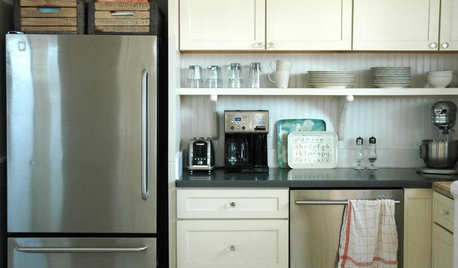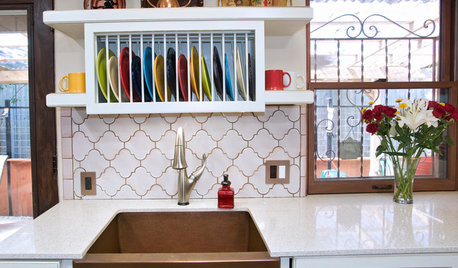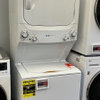What makes a TL HE? How does agitatorless work?
luvmylg
16 years ago
Related Stories

APARTMENTSHouzz Tour: Personalizing a Miami Bachelor Pad
Meaningful artwork and other taste-specific touches make for a masculine home that happily fits the owner
Full Story
KITCHEN DESIGNTrick Out Your Kitchen Backsplash for Storage and More
Free up countertop space and keep often-used items handy by making your backsplash more resourceful
Full Story
STUDIOS AND WORKSHOPSA Stitch in Time: Creative Sewing Spaces
Sewing rooms have become popular again as people of all ages embrace simple crafts they can do at home
Full Story
BUDGET DECORATING8 Cost-Effective Ways to Get a High-End Look
Don’t discount that expensive material yet. By using a small amount in a strategic way, you can get a luxurious look without the expense
Full Story
KITCHEN DESIGNDish-Drying Racks That Don’t Hog Counter Space
Cleverly concealed in cabinets or mounted in or above the sink, these racks cut kitchen cleanup time without creating clutter
Full Story
MOST POPULARHouzz Tour: Going Off the Grid in 140 Square Feet
WIth $40,000 and a vision of living more simply, a California designer builds her ‘forever’ home — a tiny house on wheels
Full Story
BATHROOM DESIGNKey Measurements to Help You Design a Powder Room
Clearances, codes and coordination are critical in small spaces such as a powder room. Here’s what you should know
Full Story
MORE ROOMS5 Ways to Decorate Around a Flat-Screen TV
Color, Placement and Accessories Help that Big Black Screen Blend In
Full StoryMore Discussions










dadoes
fa_f3_20
Related Professionals
Carson Kitchen & Bathroom Designers · 93927 Kitchen & Bathroom Remodelers · Clovis Kitchen & Bathroom Remodelers · Port Angeles Kitchen & Bathroom Remodelers · Tuckahoe Kitchen & Bathroom Remodelers · Plant City Kitchen & Bathroom Remodelers · Casas Adobes Cabinets & Cabinetry · Hopkinsville Cabinets & Cabinetry · Salisbury Cabinets & Cabinetry · Haverhill Custom Closet Designers · La Grange Park Custom Closet Designers · Bossier City Custom Closet Designers · Arlington Flooring Contractors · Hazleton Flooring Contractors · Tucson Flooring Contractorsjcrowley99
ebear1271
cheez
washer_man
fa_f3_20
washer_man